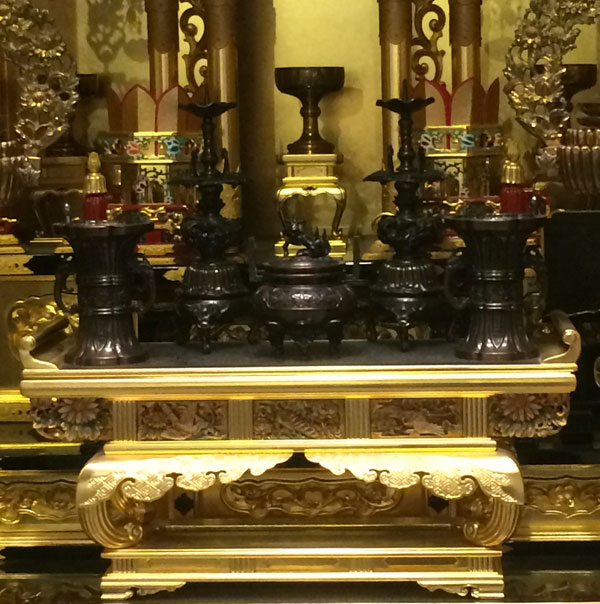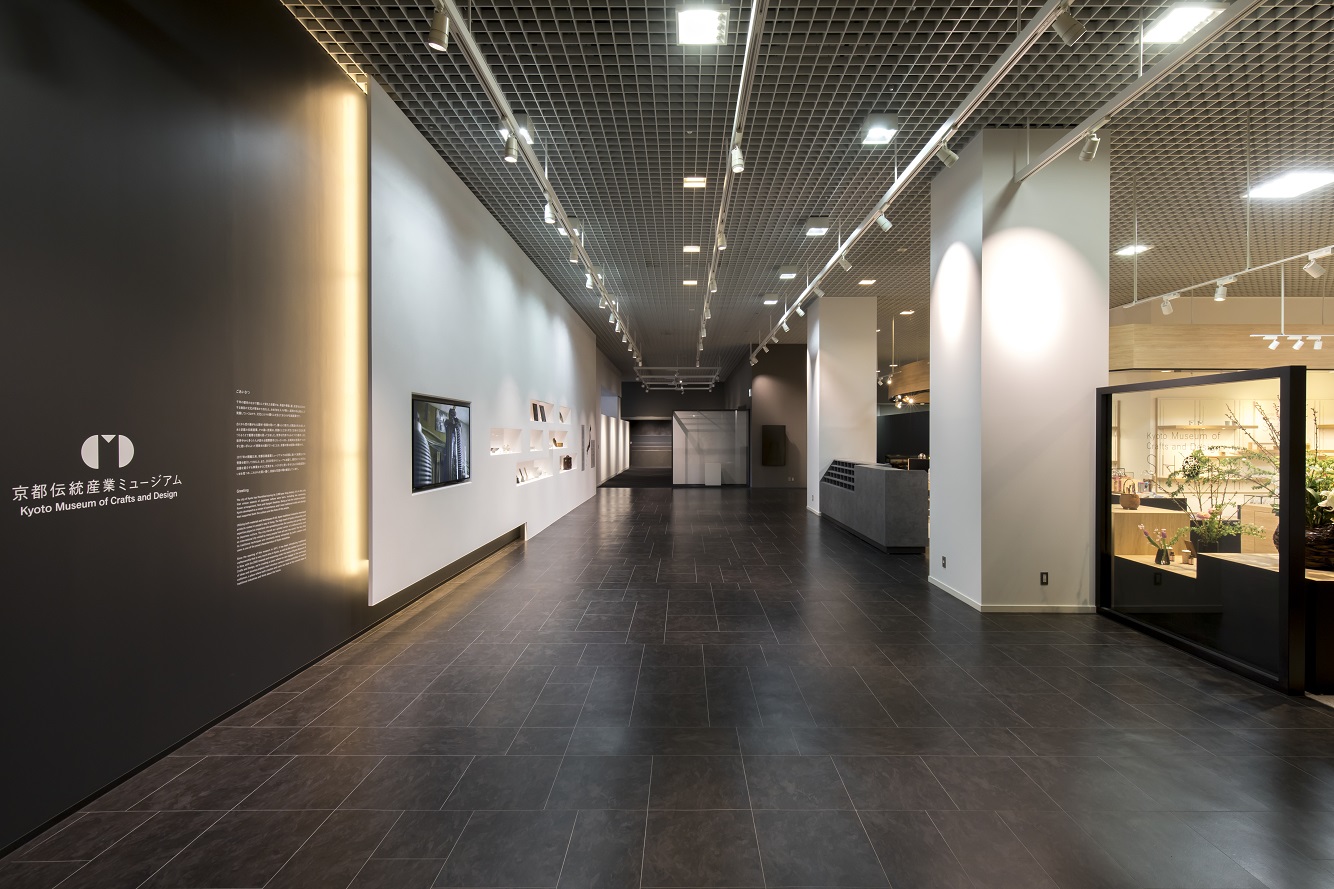
- Household Buddhist altars
- Kyoto
Kyo Buddhist altar equipment Kyo butsugu
Techniques from Kyoto, the home of Buddhism
Quality of the tradition through different ages
Description
What is Kyo Buddhist altar equipment ?
Kyo Butsugu are Buddhist altars and altar fittings made in Kyoto. Studded with temples of various sects, Kyoto has always prospered as the center of Buddhism, inevitably leading to increasing demand for altar fittings for memorial services. 80% of Buddhist altars and fittings in temples across the country are Kyo Butsugu. Kyo Butsugu is characterized by their long-established quality and techniques. As Buddhist altar fittings are ill-suited to mass production because each sect employs a different style, Kyo Butsugu has been produced up to this day by combining expertise in woodwork, sculpture, metalwork and urushi work to meet the requirements of each sect. With prodigious techniques, Kyo Butsugu has been of the highest quality in various periods in history and has proven its outstanding quality in a number of national treasures and cultural properties. Even today, each step of the manufacturing process is professionally handcrafted with traditional techniques and experience.
History
History of Kyo Butsugu is presumed to have started in the 8th century when the capital was transferred to Heiankyo in 794, while that of Buddhist altar fittings is believed to have started along with the introduction of Buddhism in the 6th century. Kyoto, as the center of Buddhism, is the home of grand head temples of all sects, spurring the development of techniques for sect-designated altar styles and tradition. In the middle of the Heian period (794 - 1185), Jocho, a sculptor of Buddhist statues, founded a Buddhist sculpture workshop in Shichijo, Kyoto where sculptors of Buddhist statues and altar fittings such as Jocho, his family and followers devoted themselves to Buddhist sculpture. In the early 11th century, Kyo Butsugu went into full-scale production, particularly for the samurai class. In the Edo period (1603 - 1868), the Tokugawa Shogunate established a rule to have temples prove that they are not Christian in order to ban the religious beliefs of Christianity. This lead the public to become supporters of temples and install Buddhist altars in their homes. Since then, the production of Kyo Butsugu altars for family use began in full swing.
General Production Process
- 1. Wooden base Japanese cypress, pine and zelkova are mainly used for Kyo Butsugu. After carefully selecting wood with no cracks, knots or twists, the wood is thoroughly dried. The body of a Buddhist altar and altar fittings are made to conform to the style of each sect or temple, taking into consideration the thickness of the lacquer coating to be applied in the later process.
- 2. Wood sculpture Flowers, birds, animals and people are carved in the wooden base according to the sect-designated style. As it is important for decorations on the Buddhist altar and altar fittings to express vital power and piece of mind, this process requires refined taste and advanced techniques. Dozens of different kinds of chisels and knives are used for decor carving.
- 3. Buddhist sculpture There are two ways to carve Buddhist statues: Ichiboku-zukuri and yosegi-zukuri. Ichiboku-zukuri is a technique of carving a Buddha statue from a solid block of wood, and yosegi-zukuri is a technique of carving a statue in a piecemeal fashion by making the parts for statue and assembling the pieces afterwards. Large statues can be made using the yosegi-zukuri technique.
- 4. Lacquering Natural urushi lacquer is applied on the wooden base. After the base is smoothed, the process of painting the surface evenly with urushi, drying and whetting to smooth the surface is repeated before finishing with the final lacquer coat. The lacquering process requires much time and effort, but careful base coating holds the key to an exquisite finish. The hardness and dryness of the lacquer is adjusted by virtue of the artistan’s years of experience.
- 5. Roiro The roiro technique is used to erase brush lines and finish the piece to have a mirror-smooth, glossy finish, maximizing the unique characteristics of urushi lacquer. The process includes multiple steps. First, the surface is smoothened with Suruga or roiro charcoal. This is followed by delicate polishing called dozuri, and then suri urushi which is rubbing in black lacquer called roiro-urushi on the surface. Finally, the piece is polished with polishing powder and oil.
- 6. Maki-e Maki-e is the height of Japanese urushi work, drawing exquisite patterns or designs with gold and silver powder and shells sprinkled on the roiro-processed surface. Lacquer is applied over the drawn patterns and designs, dried and then polished, making the patterns appear, while another method requires no polishing. The finished quality varies depending on the roughness and thickness of powder in the patterns or designs. There are many other Maki-e techniques that deliver a variety of designs.
- 7. Coloring Colors are added to the surface of the piece with gold powder and pigments including mineral pigments and mud pigments. There are various coloring techniques such as gokusaishiki which is applying many layers of color to the whitewash base, kijisaishiki which is using tint color pigments to make the most of the wood grain, and hakusaishiki which is coloring the gold-powdered base with tint color pigments. The craftsman’s uniqueness is brought out in color coordination and composition.
- 8. Gilding Gold leaf is placed over the lacquered Buddhist altar and fittings before the lacquer dries. Gold leaf sheets that are 0.0001 to 0.0002mm thick are used for decoration. Proficient skills make it possible to decorate a complicated shaped sculpture and align the edges of gold leaf. Wiping a gold-leafed object with a cloth is very delicate work as the dryness of lacquer is affected by the weather, requiring subtle craftsmanship.
- 9. Ornamental metal Ornamental fine metal that are used to decorate Buddhist altar fittings are processed. Copper or brass sheets are engraved with patterns and are finished gold-plated. The ornamental metal parts create a solemn atmosphere, but it is important to make sure that they are in harmony with the altar fittings.
- 10. Assembly Finished parts are assembled to complete the Kyo Butsugu.
Where to Buy & More Information
Kyoto Museum of Crafts and Design

-
Address
-
Tel.+81-75-762-2670
-
ClosedDecember 29 to January 3
-
Business Hours9am to 5pm
-
Website
See more Household Buddhist altars
- Osaka Buddhist altar
- Hikone Buddhist altar
- Iiyama Buddhist altar
- Nagoya Buddhist altar
- Kanazawa Buddhist altar
- Kawanabe Buddhist altar
- Kyo Buddhist altar
- Hiroshima Buddhist altar
- Mikawa Buddhist altar
- Kyo Buddhist altar equipment
- Nanao Buddhist altar
- Yamagata Buddhist altar
- Yame-fukushima Buddhist altar
- Nagaoka Buddhist altar
- Sanjo Buddhist altar
- Niigata-shirone Buddhist altar
- Owari Buddhist altar equipment































































































































































































































































































